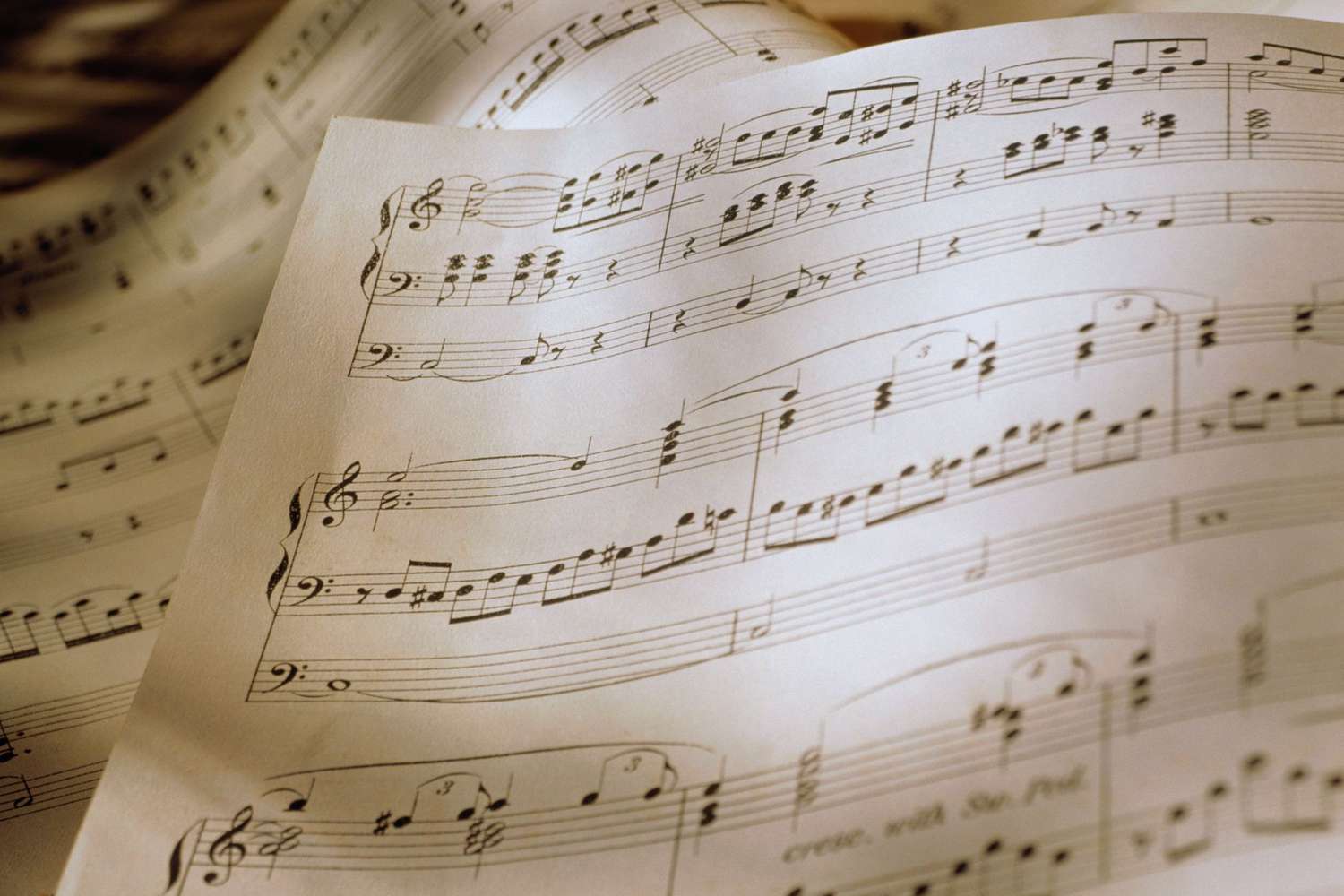A Brief History of Sheet Music: Tracing the Musical Manuscripts Through Time
 Music, the universal language that transcends borders and resonates through the ages, has been documented and preserved through the artful pages of sheet music. This brief exploration aims to take you on a journey through the evolution of sheet music, from its humble beginnings to the intricate scores we recognize today.
Music, the universal language that transcends borders and resonates through the ages, has been documented and preserved through the artful pages of sheet music. This brief exploration aims to take you on a journey through the evolution of sheet music, from its humble beginnings to the intricate scores we recognize today.
1. Ancient Harmonies:
The roots of sheet music can be traced back to ancient civilizations where musical notations were rudimentary and often symbolic. The Greeks, for instance, used letters of the alphabet to represent different pitches, laying the groundwork for a more formalized system.
2. Medieval Manuscripts:
In the medieval era, monks painstakingly transcribed musical compositions by hand. These illuminated manuscripts showcased Gregorian chants and early polyphony, employing neumes – symbols indicating the shape and direction of the melody.
3. The Renaissance Revolution:
With the advent of the printing press in the 15th century, the world witnessed a revolutionary change in the dissemination of knowledge, including music. The ability to mass-produce sheet music allowed compositions to reach a broader audience, democratizing access to musical knowledge.
4. Baroque Brilliance:
The Baroque period (1600-1750) saw a flourishing of musical creativity, and sheet music became more standardized. Composers like Johann Sebastian Bach and George Frideric Handel left behind meticulously notated scores, showcasing the increasing complexity and sophistication of musical expression.
5. Classical Precision:
The Classical era (1750-1820) brought about a more standardized notation system, including the use of dynamic markings, tempo indications, and standardized forms like sonata-allegro. Composers like Wolfgang Amadeus Mozart and Ludwig van Beethoven elevated sheet music to a refined art form.
6. Romantic Expressiveness:
The Romantic period (1820-1910) saw an explosion of emotional expression in music, and composers like Franz Schubert and Frédéric Chopin pushed the boundaries of notation. Sheet music became a canvas for conveying nuanced emotions, with detailed markings guiding performers through the depths of the composer’s intent.
7. 20th Century Innovations:
The 20th century brought radical changes to the world of music. From the avant-garde experiments of composers like Igor Stravinsky to the popularization of jazz and electronic music, sheet music continued to adapt to diverse musical styles.
8. Digital Age:
In the contemporary digital age, sheet music has undergone a transformative shift. Digital notation software, online platforms, and electronic readers have made sheet music more accessible and environmentally sustainable. Musicians can now access vast libraries of scores with a click.
In conclusion, the history of sheet music is a testament to humanity’s desire to capture, preserve, and share the beauty of sound. From the medieval scriptoria to the digital screens of today, sheet music has evolved alongside the changing landscapes of musical expression, ensuring that the melodies of the past continue to resonate with generations yet to come.
